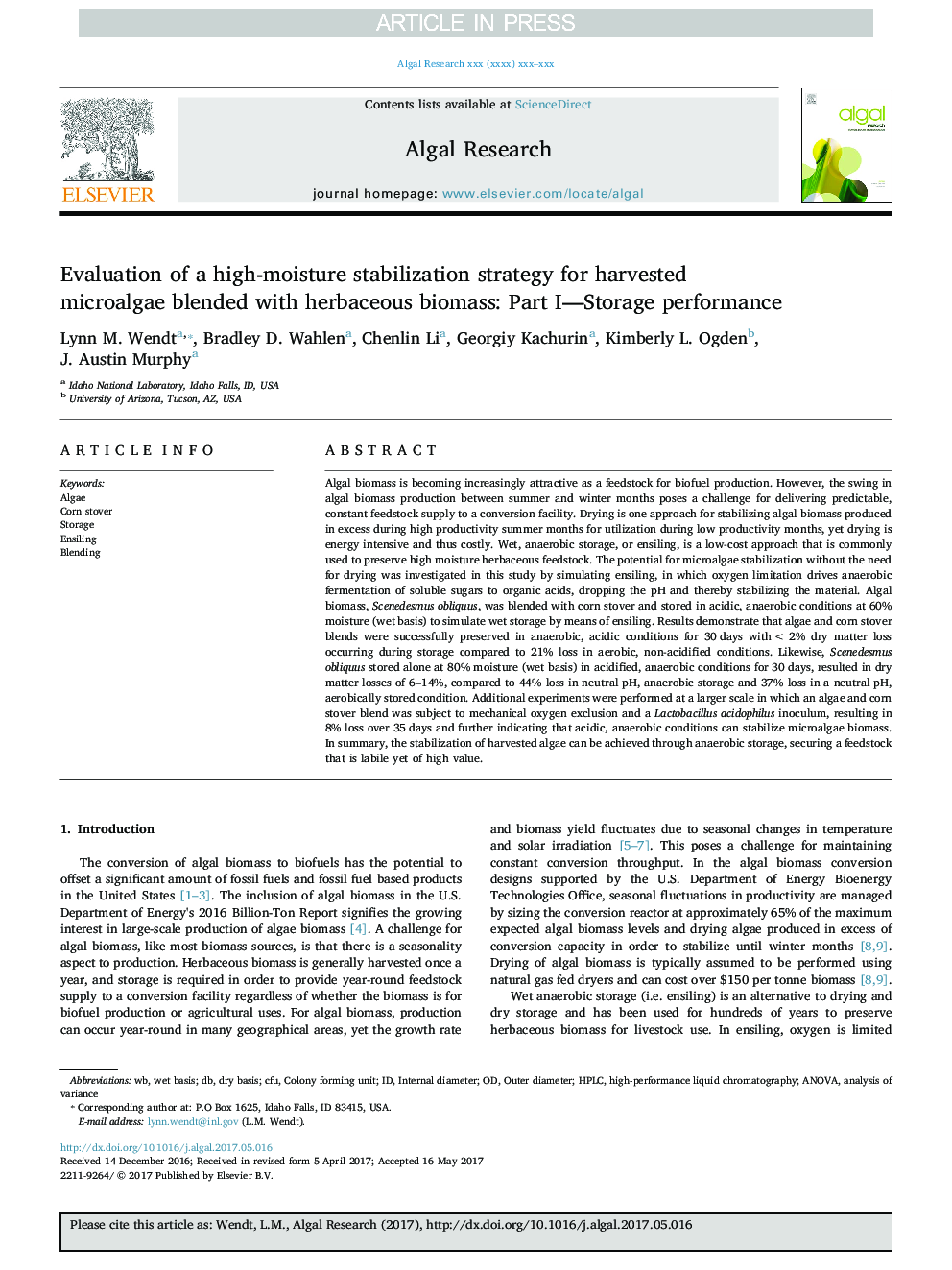| Article ID | Journal | Published Year | Pages | File Type |
|---|---|---|---|---|
| 5478410 | Algal Research | 2017 | 9 Pages |
Abstract
Algal biomass is becoming increasingly attractive as a feedstock for biofuel production. However, the swing in algal biomass production between summer and winter months poses a challenge for delivering predictable, constant feedstock supply to a conversion facility. Drying is one approach for stabilizing algal biomass produced in excess during high productivity summer months for utilization during low productivity months, yet drying is energy intensive and thus costly. Wet, anaerobic storage, or ensiling, is a low-cost approach that is commonly used to preserve high moisture herbaceous feedstock. The potential for microalgae stabilization without the need for drying was investigated in this study by simulating ensiling, in which oxygen limitation drives anaerobic fermentation of soluble sugars to organic acids, dropping the pH and thereby stabilizing the material. Algal biomass, Scenedesmus obliquus, was blended with corn stover and stored in acidic, anaerobic conditions at 60% moisture (wet basis) to simulate wet storage by means of ensiling. Results demonstrate that algae and corn stover blends were successfully preserved in anaerobic, acidic conditions for 30Â days with <Â 2% dry matter loss occurring during storage compared to 21% loss in aerobic, non-acidified conditions. Likewise, Scenedesmus obliquus stored alone at 80% moisture (wet basis) in acidified, anaerobic conditions for 30Â days, resulted in dry matter losses of 6-14%, compared to 44% loss in neutral pH, anaerobic storage and 37% loss in a neutral pH, aerobically stored condition. Additional experiments were performed at a larger scale in which an algae and corn stover blend was subject to mechanical oxygen exclusion and a Lactobacillus acidophilus inoculum, resulting in 8% loss over 35Â days and further indicating that acidic, anaerobic conditions can stabilize microalgae biomass. In summary, the stabilization of harvested algae can be achieved through anaerobic storage, securing a feedstock that is labile yet of high value.
Keywords
Related Topics
Physical Sciences and Engineering
Energy
Renewable Energy, Sustainability and the Environment
Authors
Lynn M. Wendt, Bradley D. Wahlen, Chenlin Li, Georgiy Kachurin, Kimberly L. Ogden, J. Austin Murphy,
